Második világháborút követő földosztás eredményeként 70–75 ezer tanya épült fel.
Gazdasági vérkeringésből kimaradó területeknek a felzárkózása lelassult.
Az alföldi tanyás térségek halmozottan hátrányos helyzetbe kerültek. A szocialista államhatalom az 1949-ben alakult Tanyai Tanács irányítása mellett akarta felszámolni a tsz-szervezés akadályának tekintett tanyarendszert. Lakóik elszakadását az anyatelepülésüktől belterületi lakóházaik államosítása is gyorsította. Az építési korlátozásokat 1986-ban oldották fel, majd a rendszerváltást követően visszaállították a föld magántulajdonát. A termelőszövetkezetek megszűnésével sokan elvesztették korábbi jövedelmüket. Ezzel egy időben megszűnt az állami nagyipar és a mezőgazdasági szektor kvalifikálatlan munkaerő iránti szükséglete. Az így tartósan perifériára szorult társadalmi rétegek egy része a városoktól távolabb eső településekre, illetve azok külterületére vándorolt. Alacsony ingatlanárak és a megélhetéshez legszükségesebb javak termelésére alkalmas földhöz jutás lehetősége tette számukra vonzóvá ezeket a térségeket. A gazdasági vérkeringésből kimaradó területeknek a felzárkózása lelassult.
Az alföldi tanyás térségek halmozottan hátrányos helyzetbe kerültek.
Magyarországtól elszakadt területeken – így például Délvidéken – a tanyarendszerek a második világháború után még virágzottak, de a szocialista agrárreform keretében egyeseket vagy lebontották, vagy a gazdák maguk hagyták el a tanyáikat.
As a result of the land distribution after the Second World War, 70,000 to 75,000 farms were built. The socialist state power, under the guidance of the Farm Council established in 1949, wanted to eliminate the farm system, which was considered an obstacle to the organization of the collective farms. The separation of the residents from their mother settlement was also accelerated by the nationalization of their residential buildings. Construction restrictions were lifted in 1986, and after the change of regime, private ownership of the land was restored. Many people lost their income with the termination of producer cooperatives. At the same time, the need for unqualified labor in large-scale state industry and the agricultural sector ceased. Some of the social strata that were permanently marginalized in this way migrated to settlements further away from the cities, or to their outskirts.
Low real estate prices and the possibility of access to land suitable for the production of the goods necessary for living made these areas attractive to them.
Catch-up of areas left out of the circular economy has slowed down.
The farm areas of the Great Plain have been put at a cumulative disadvantage.
Although some people continued to work, many were forced to live in the countryside, and many farmers moved into villages and garden plots.
In areas separated from Hungary, such as Southern Serbia, farm systems still flourished after the Second World War, but in the framework of the socialist agrarian reform, they were either demolished or the farmers left their farms themselves.
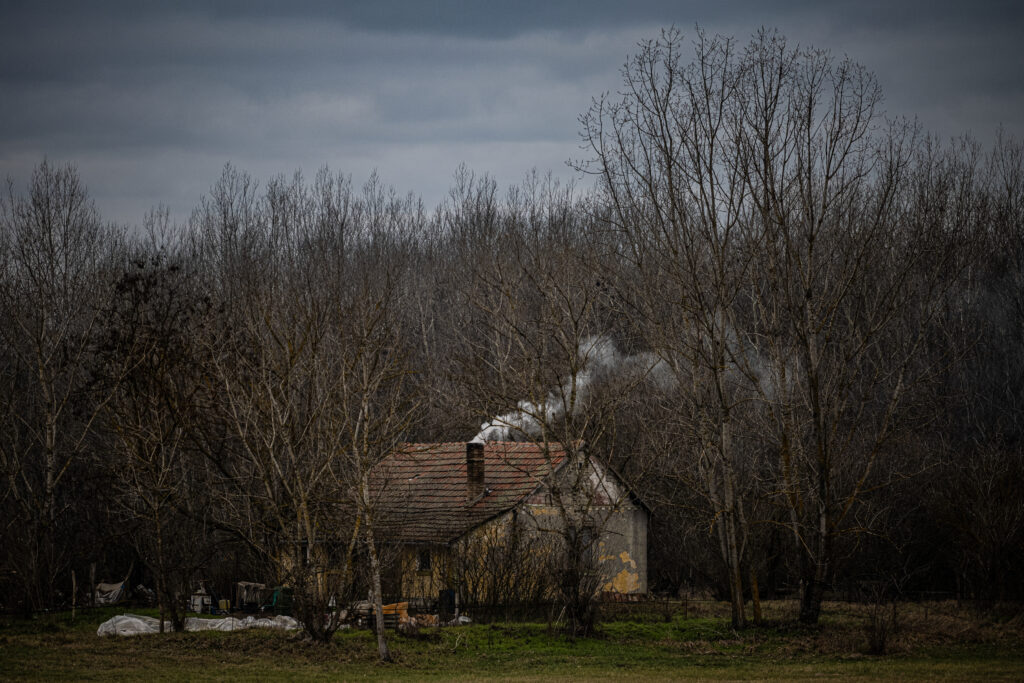
Káposzta Mária férjével élt az ásotthalmi tanyavilágban.
Párja néhány éve meghalt, azóta kakasával, néhány macskájával és emlékeivel él együtt.
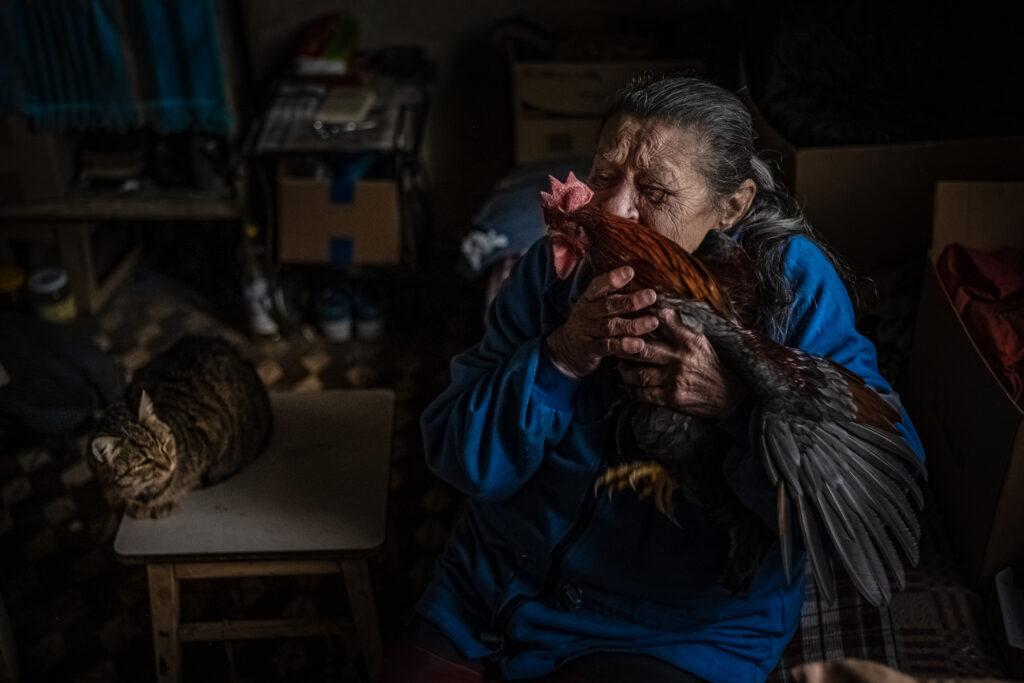
28.11.2022. Ásotthalom.
Mária Káposzta lived with her husband in a farm outside Ásotthalom.Her partner died a few years ago, since then she has been living alone with her rooster, Pityu, some cats and her memories.

Baráth Imre ül az előszobában a ház egyetlen fűtőteste mellett, a kályhánál.
19.12.2019. The boondocks of Tömörkény Imre Baráth is sitting in the anteroom next to the house’s only heating source, the stove.

17.02.2022. Mórahalom. József Ábrahám rakes the corn from the corn crib.
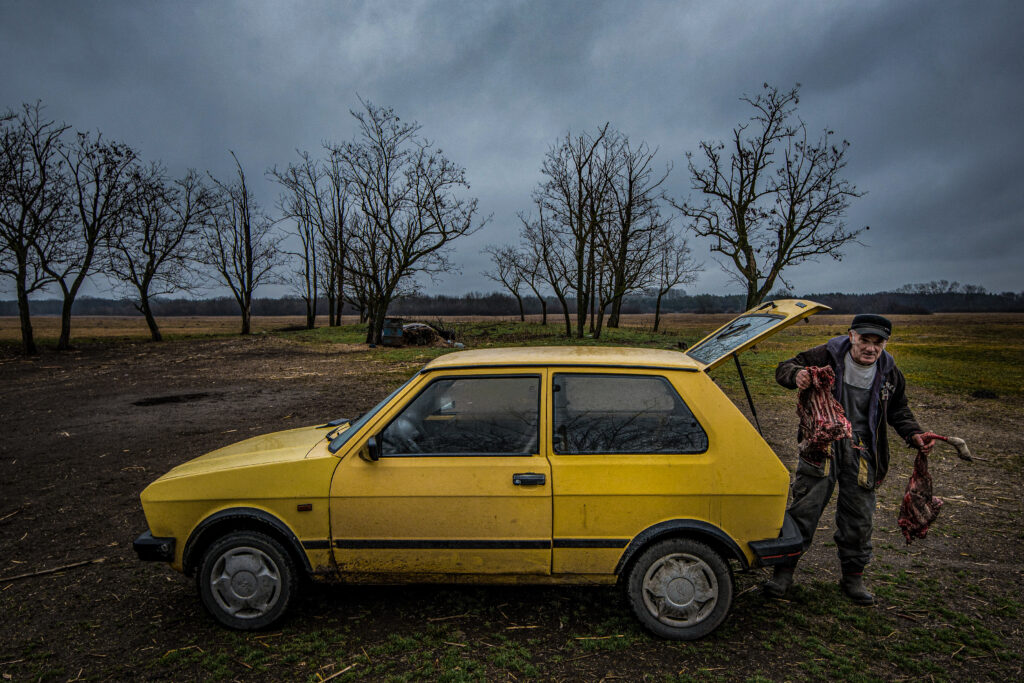
Szabadka mellett élő Antunovity Mihály juhász hozza kutyáinak a tanyára a nyers darabolt bárányt.
08.12.2018. Serbia.
Mihály Antunovity, a shepherd who lives near Subotica, brings pieces of raw lamb to the farm for his dogs.
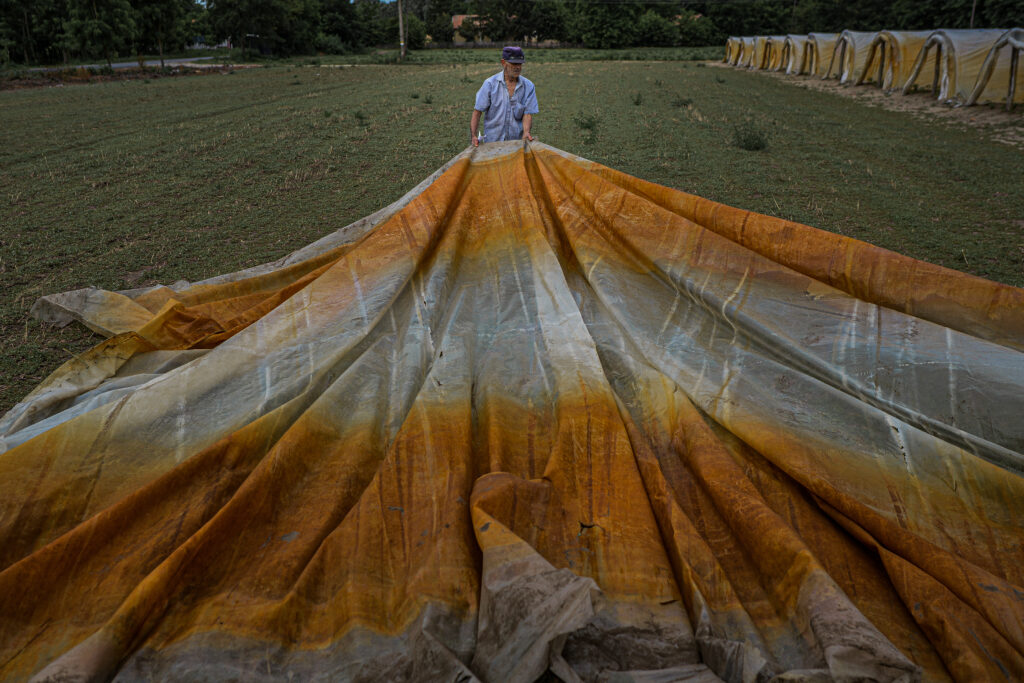
Bár néhányan folytatták a munkát, sokan a megélhetés miatt kényszerültek külterületekre, sok gazda pedig beköltözött a falvakba, kiskertekbe.
Széll Antal nyolcvanhoz közelítve is kijár dolgozni.
12.07.2019. Bodorszék.
Although some people continued to work, many were forced to live in the countryside, and many farmers moved into villages and garden plots.
Getting close to eighty Antal Széll still goes to work.

2017.11.25. Ruzsa. Az udvaron tartják a kádat, máshol nem férne el. Ezt hozzák-viszik mindennap: a befűtött előszobában éppen elfér a sparherd mellett. Itt melegszik a víz, amivel aztán feltöltik. Ha mindenki végzett, leengedik egy lavórba, majd már üresen ismét kiviszik, hogy elférjenek.
25.11.2017. Ruzsa. The tub is kept in the yard, it wouldn’t fit anywhere else. This is brought and taken every day: it just fits next to the cookstove in the heated hall. The water is heated here, it is used to fill the tub. When everyone is finished, they drain the water in a basin and then take it out so there’s enough space for everyone.
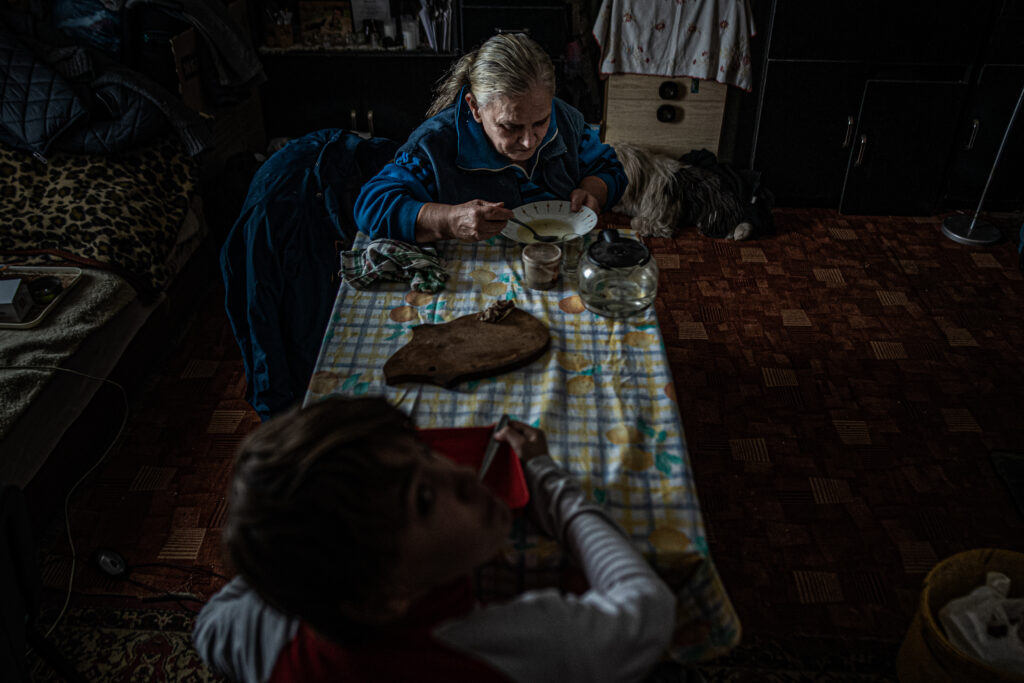
18.12.2019. Where do they live? Szeged-Szőreg Farm, Szentiván Vineyard, Szőregi Street, Brick Factory Vineyard? It would be much easier to rename this place than elevate it from the sixties.Victoria lived on the edge of Szőreg, Újszentiván with her son, Antal. His son passed away, she lives alone in a one-room apartment.
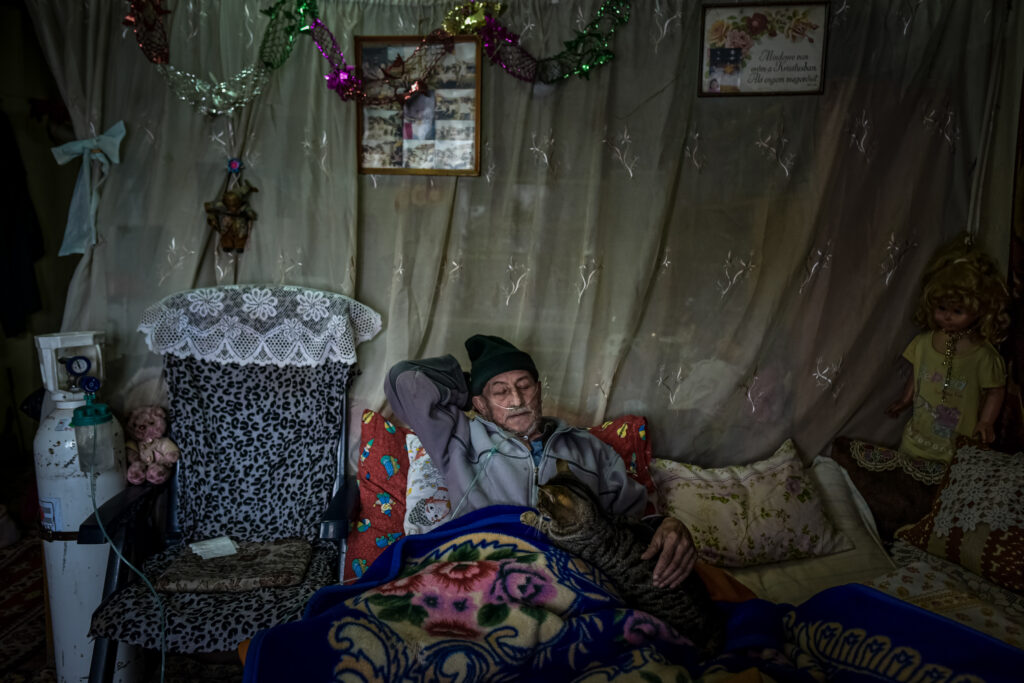
28.02.2018. Szeged, the backyards of Ballagi lake. Zoltán Dreghici has been suffering from pulmonary disease for 18 years with his wife in a small hut. Zoltán got a heart attack, he was being treated in a hospital, although his condition is constantly deteriorating, he was sent home. He needs clear oxygen in order to breath. He wears four layers of clothes, they only have a tiny heater, it is only 8-10 degrees in the room.
